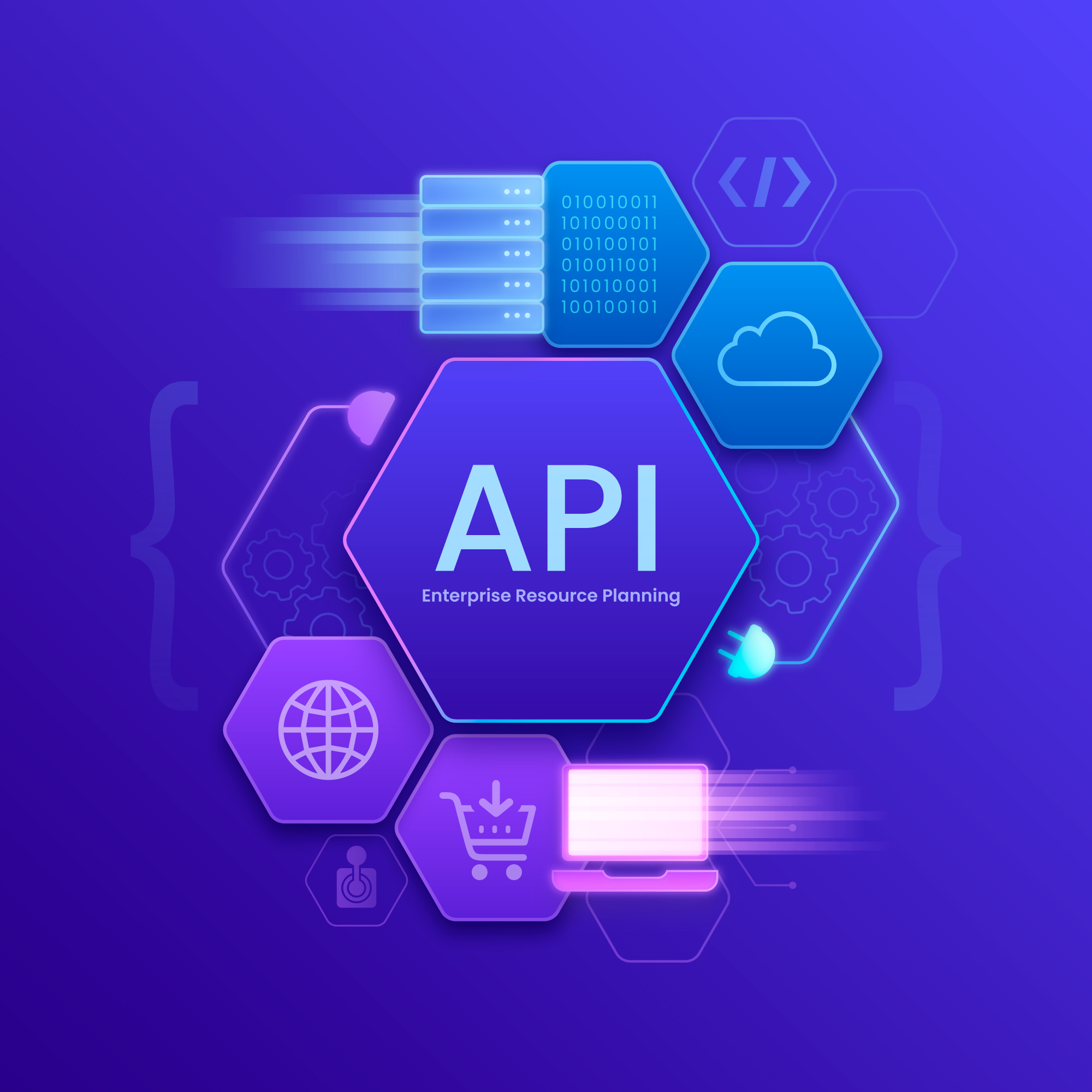
A Beginner’s Guide to Infor ION Integrations
Imagine running a business where your inventory system doesn’t talk to your accounting software, your customer data is scattered across multiple platforms, and your team spends hours manually entering data. Sounds like a nightmare, right? This is the reality for many businesses struggling with siloed systems. According to a 2023 IDC report, 80% of organizations with integrated ERP systems report significant improvements in operational efficiency. Enter Infor ION, a game-changing integration platform designed to connect disparate systems and streamline workflows.
Infor ION, or Intelligent Open Network, is Infor’s powerful middleware solution that enables seamless data exchange across applications, both within the Infor ecosystem and with external systems. Whether you’re a small business owner dipping your toes into ERP integrations or an IT manager exploring ways to optimize operations, this guide is your roadmap to understanding Infor ION integrations. We’ll break down the basics, explore its benefits, and provide actionable steps to get started, all while keeping things beginner-friendly yet valuable for intermediate readers.
For businesses seeking expert guidance on integrations, Sama Integrations offers tailored solutions to harness the full potential of Infor ION. Let’s dive in and demystify how this platform can transform your business processes.
Section 1: What is Infor ION?
Understanding Infor ION and Its Role in ERP
Infor ION is the backbone of Infor’s integration strategy, designed to connect applications, streamline data flow, and enhance business agility. As a cloud-based middleware platform, it acts as a bridge between Infor’s enterprise resource planning (ERP) solutions, such as Infor CloudSuite, and other systems like CRM, HR, or third-party applications. Its primary goal? To eliminate data silos and ensure real-time, accurate information across your organization.
Unlike traditional integration methods that rely on complex coding or point-to-point connections, Infor ION offers a standardized, scalable approach. It uses a hub-and-spoke model, where ION serves as the central hub, connecting various applications (spokes) through pre-built connectors and workflows. This reduces complexity and ensures flexibility as your business grows.
Key features of Infor ION include:
- Cloud-Based Architecture: Hosted on Amazon Web Services (AWS), ION ensures scalability, security, and high availability.
- User-Friendly Interface: Its drag-and-drop workflow designer makes it accessible even for non-technical users.
- Event-Driven Processing: ION enables real-time data updates, triggering actions across systems when specific events occur (e.g., a new sales order).
- Industry-Specific Solutions: Tailored for industries like manufacturing, healthcare, and distribution, ION integrates seamlessly with Infor’s CloudSuites.
According to Gartner’s 2024 Magic Quadrant for Cloud ERP, Infor’s focus on industry-specific integrations has positioned it as a Leader for product-centric enterprises, with over 60,000 organizations in 175 countries using its solutions. This widespread adoption underscores ION’s reliability and versatility.
New to Infor ION Integrations?
Navigating Infor ION integrations can be daunting for beginners. Our expert guidance simplifies the process, helping you integrate systems efficiently and effectively to meet your business goals.
Why Infor ION Matters for Businesses
In today’s fast-paced digital economy, businesses can’t afford fragmented systems. Infor ION addresses this by enabling seamless data sharing, which leads to faster decision-making and improved operational efficiency. For example, a manufacturing company can use ION to connect its ERP with supply chain management tools, ensuring inventory levels are updated in real time. This connectivity reduces errors, cuts costs, and enhances customer satisfaction.
Section 2: The Importance of ERP Integration
What is ERP Integration?
ERP integration is the process of connecting an ERP system, like Infor CloudSuite, with other business applications to create a unified ecosystem. This ensures data flows seamlessly between systems, eliminating manual data entry and reducing errors. For instance, integrating your ERP with a CRM system allows sales teams to access real-time inventory data, improving customer interactions.
A 2025 Gartner report predicts that 65% of organizations will prioritize integration capabilities as strategic investments by 2026, up from 40% in 2019. This shift highlights the growing need for interconnected systems to stay competitive.
Benefits of ERP Integration with Infor ION
Integrating systems with Infor ION offers several advantages:
- Real-Time Data Access: ION’s event-driven architecture ensures data updates instantly across connected systems, enabling faster decision-making.
- Reduced Operational Costs: Automation eliminates manual processes, saving time and reducing errors. A Forrester study found that Infor CloudSuite solutions can deliver a 114% ROI for manufacturing and distribution companies.
- Scalability: ION’s cloud-based nature allows businesses to scale integrations as they grow, without significant infrastructure investments.
- Enhanced Collaboration: By connecting departments like finance, HR, and supply chain, ION fosters cross-functional collaboration.
- Industry-Specific Customization: ION’s pre-built connectors for industries like healthcare and manufacturing reduce implementation time.
For businesses looking to streamline their integration efforts, Sama Integrations’ Custom Integration Development provides tailored solutions to meet unique business needs.
Common Challenges in ERP Integration
While the benefits are clear, ERP integration can come with challenges:
- Complexity: Integrating legacy systems with modern cloud-based ERPs can be complex, requiring expert guidance.
- Data Quality: Inconsistent or incomplete data can hinder integration success.
- Cost Concerns: Initial setup costs may deter small businesses, though cloud-based solutions like ION reduce long-term expenses.
- User Adoption: Employees may resist new workflows if not properly trained.
Sama Integrations’ Integration Consulting can help businesses navigate these challenges with expert advice and strategic planning.
New to Infor ION Integrations?
Navigating Infor ION integrations can be daunting for beginners. Our expert guidance simplifies the process, helping you integrate systems efficiently and effectively to meet your business goals.
Section 3: How Infor ION Works
The Architecture of Infor ION
Infor ION’s architecture is designed for simplicity and efficiency. At its core is the ION Connect layer, which facilitates communication between applications using standardized data formats like XML and JSON. This layer supports:
- Connectors: Pre-built adapters for Infor and non-Infor applications, such as Salesforce, SAP, or Oracle.
- Workflows: Visual tools to design automated processes, like updating inventory when a sales order is placed.
- Data Mapping: Tools to translate data between systems, ensuring compatibility.
- Event Management: Triggers that initiate actions based on predefined events, such as sending a notification when a purchase order is approved.
The ION API Gateway enables secure connections to external systems, while the ION Data Lake stores and organizes data for analytics, providing actionable insights. This architecture supports both cloud and hybrid deployments, making it versatile for businesses of all sizes.
Step-by-Step: How to Set Up an Infor ION Integration
Here’s a beginner-friendly guide to setting up a basic Infor ION integration:
- Define Your Goals: Identify the systems you want to connect (e.g., Infor CloudSuite and a CRM) and the data to share (e.g., customer orders).
- Assess Compatibility: Ensure the systems support ION’s connectors or APIs. Infor’s official documentation provides a list of supported applications.
- Configure ION Connect: Use ION’s interface to map data fields between systems. For example, map “Customer Name” in your CRM to “Client Name” in your ERP.
- Design Workflows: Create automated workflows using ION’s drag-and-drop designer. For instance, set a rule to update inventory when a sale is recorded.
- Test the Integration: Run test scenarios to ensure data flows correctly and workflows trigger as expected.
- Deploy and Monitor: Launch the integration and use ION’s monitoring tools to track performance and troubleshoot issues.
- Seek Expert Support: For complex integrations, consider Sama Integrations’ Support and Troubleshooting to ensure smooth operations.
Visual Suggestion: Include a flowchart illustrating the data flow between an ERP, CRM, and supply chain system via Infor ION to clarify the process for readers.
Real-World Example: Manufacturing Integration
Consider a mid-sized manufacturer using Infor CloudSuite Industrial. By integrating their ERP with a warehouse management system (WMS) via Infor ION, they automated inventory updates, reducing stockouts by 30% and cutting manual data entry time by 50%. This real-time connectivity allowed their sales team to provide accurate delivery timelines to customers, boosting satisfaction.
Section 4: Getting Started with Infor ION Integrations
Choosing the Right Integration Approach
Infor ION supports multiple integration approaches, depending on your business needs:
- Point-to-Point: Direct connections between two systems, suitable for simple integrations but less scalable.
- Hub-and-Spoke: ION acts as the central hub, connecting multiple systems, ideal for complex environments.
- API-Driven: Uses APIs for real-time, scalable integrations, especially with external applications.
- Hybrid: Combines cloud and on-premises systems for businesses transitioning to the cloud.
A 2025 IDC report forecasts that 75% of global businesses will shift to modular ERP systems by 2027, with platforms like ION enabling this transition through flexible integrations.
Best Practices for Successful Integrations
To ensure a smooth Infor ION integration, follow these tips:
- Start Small: Begin with a single integration (e.g., connecting your ERP to a CRM) to test the waters.
- Clean Your Data: Ensure data consistency across systems to avoid errors during integration.
- Involve Stakeholders: Engage end-users early to align integrations with business needs and boost adoption.
- Leverage Pre-Built Connectors: Use ION’s library of connectors to save time and reduce costs.
- Monitor Performance: Regularly review integration performance using ION’s analytics tools to identify bottlenecks.
- Partner with Experts: For complex projects, Sama Integrations’ Managed Integration Services can provide ongoing support and optimization.
Common Tools and Technologies
Infor ION integrates with a variety of tools, including:
- Infor CloudSuite: Industry-specific ERP solutions for manufacturing, healthcare, and more.
- Third-Party Applications: Salesforce, Microsoft Dynamics, SAP, and Oracle via APIs or connectors.
- Data Analytics Platforms: ION’s Data Lake integrates with BI tools like Power BI for advanced reporting.
- IoT and AI: Infor’s AI-driven tools, such as Infor GenAI, enhance automation and decision-making.
New to Infor ION Integrations?
Navigating Infor ION integrations can be daunting for beginners. Our expert guidance simplifies the process, helping you integrate systems efficiently and effectively to meet your business goals.
Section 5: Advanced Features and Future Trends
Leveraging AI and GenAI in Infor ION
Infor ION is evolving with AI and generative AI (GenAI) capabilities, enabling autonomous workflows and intuitive user experiences. Gartner predicts that by 2027, 60% of organizations replacing ERP systems will prioritize platforms with AI-driven orchestration, like Infor ION. For example, ION’s AI can predict inventory shortages based on historical data, triggering automatic reordering.
Cloud-Native and Modular ERP
The shift to cloud-native ERP systems is accelerating, with Gartner forecasting $723 billion in public cloud spending by 2025. Infor ION’s cloud-based architecture supports this trend, offering modular integrations that allow businesses to add or remove applications as needed. This flexibility is critical for adapting to changing market demands.
Sustainability and Data Privacy
With growing concerns about data privacy and sustainability, Infor ION aligns with industry trends. Gartner notes that carbon emissions from cloud services will be a top factor in purchase decisions by 2025. ION’s AWS-based infrastructure supports sustainable practices, while its security features ensure compliance with data regulations.
Conclusion
Infor ION integrations are a powerful tool for businesses looking to break down data silos, streamline operations, and stay competitive in a digital world. By connecting Infor and non-Infor systems, ION enables real-time data flow, automation, and scalability, all while supporting industry-specific needs. Whether you’re a beginner exploring ERP integrations or an intermediate user seeking to optimize workflows, Infor ION offers a flexible, user-friendly solution.
To embark on your integration journey, start small, leverage pre-built connectors, and consider partnering with experts. Sama Integrations provides comprehensive services, from custom development to ongoing support, ensuring your Infor ION integrations deliver maximum value.
New to Infor ION Integrations?
Navigating Infor ION integrations can be daunting for beginners. Our expert guidance simplifies the process, helping you integrate systems efficiently and effectively to meet your business goals.




